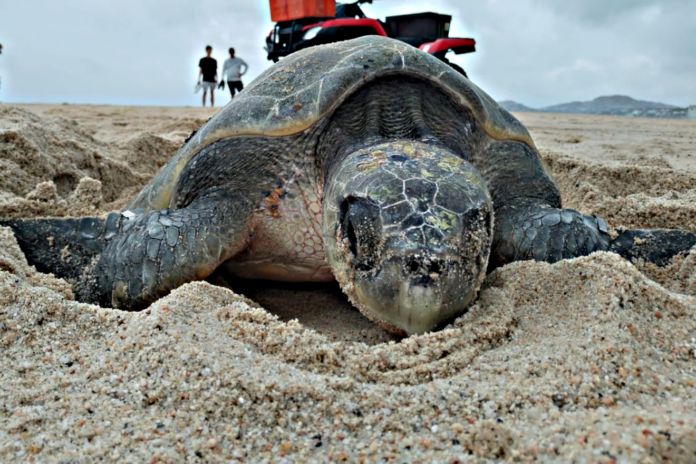The head of the Municipal Program for the Protection of Sea Turtles, biologist Gabriel Olvera Guevara, reported that the first mass nesting of Olive Ridley turtles for the 2024-2025 season was recorded. A total of 205 nests and 21,740 eggs have been counted, which were transferred to the incubation corral located at the Pueblo Bonito hotel in Cabo San Lucas.
The municipal official explained that these events occur due to meteorological phenomena such as the formation of tropical cyclones; for this reason, the arrival of the turtles occurred on August 8 and 9, as there was a storm near Los Cabos.
He noted that, in collaboration with the staff of the Pueblo Bonito, Diamante, Nobu, and Hard Rock developments, an intensive 24-hour operation was carried out, during which 21,740 sea turtle eggs were recovered.
The representative of the Pueblo Bonito hotel, Carlos Villalobos, stated that the records of sea turtle arrivals began in the early hours of Thursday, August 8, at El Suspiro beach, as well as in the beach area of the Pueblo Bonito development.
“The increase was surprising, something never seen before, they began to come out to lay eggs in different parts of the coast, which triggered an intense operation, as at the same time the first hatchlings were born and are now in our incubation corral,” he said.
Currently, there are about 700 protected nests in the corral located in the development, something never recorded at this time, indicating that its capacity will be exceeded, which is a substantial fact for protecting the nests this season.
“This shows that our protection and conservation work has been a complete success, all the effort invested over 21 years has been worth it, many of the hatchlings that have been released are now adults and are returning to reproduce on these beaches where they were once born,” he highlighted.
To conclude, Olvera Guevara recognized the voluntary participation of those involved in the protection of this endangered species, who successfully achieved this first mass nesting.
Source: BCS Noticias






